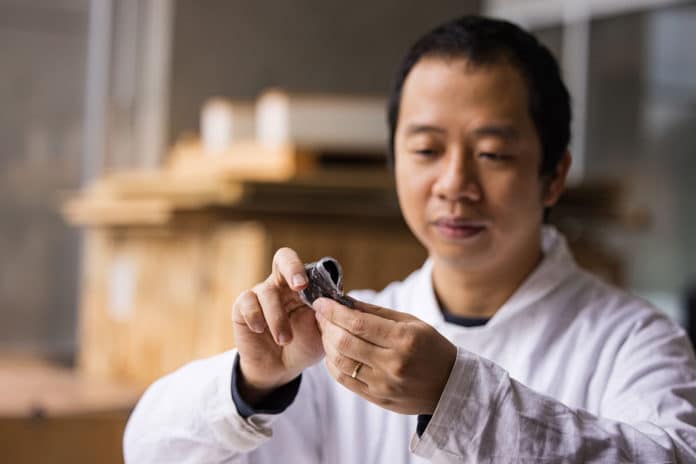Researchers from the University of British Columbia (UBC) have created what they say is the first battery that is both flexible and washable. New battery can operate even when twisted or stretched to twice its normal length or after being washed multiple times.
“Wearable electronics are a big market, and stretchable batteries are essential to their development,” says Dr. Ngoc Tan Nguyen, a postdoctoral fellow at UBC’s faculty of applied science. “However, up until now, stretchable batteries have not been washable. This is a critical addition if they are to withstand the demands of everyday use.”
In normal batteries, the internal layers are hard materials encased in a rigid exterior. The UBC team turns to alternative chemistry in zinc and manganese dioxide – stretchable by grinding them into small pieces and then embedding them in rubbery plastic or polymer. Zinc-manganese has a low cost and safer chemistry than lithium-ion batteries, which can produce toxic compounds when they break. The battery comprises several ultra-thin layers of these polymers wrapped inside a casing of the same polymer. This construction creates an airtight, waterproof seal that ensures the integrity of the battery through repeated use.
The resulting battery has a reversible specific capacity of 160 mAh g−1 cathode active mass and retains 75% of its capacity over 500 charge and discharge cycles. The battery has a good shelf-life (22% mass loss of electrolyte after 523 days) and can withstand 39 washing cycles. The team expects to further improve its durability as they continue to develop the technology.
“We put our prototypes through an actual laundry cycle in both home and commercial-grade washing machines. They came out intact and functional, and that’s how we know this battery is truly resilient,” says team member Bahar Iranpour.
Researchers are now working to increase the battery’s power output and cycle life, but already the innovation has attracted commercial interest. They believe that when the new battery is ready for consumers, it could cost the same as an ordinary rechargeable battery.
“The materials used are incredibly low-cost, so if this is made in large numbers, it will be cheap,” says electrical and computer engineering professor Dr. John Madden, who supervised the work. “Wearable devices need power. By creating a cell that is soft, stretchable, and washable, we are making wearable power comfortable and convenient.”
